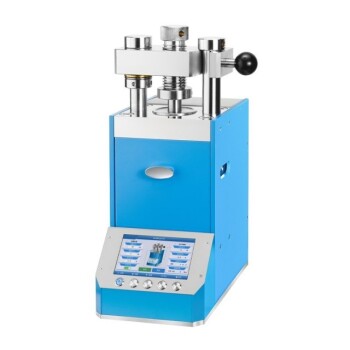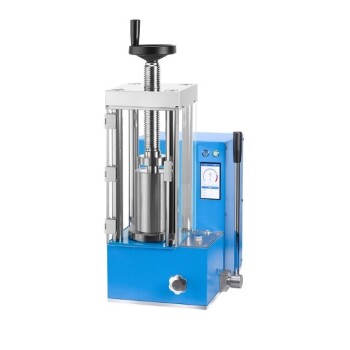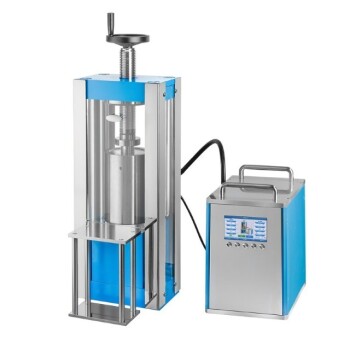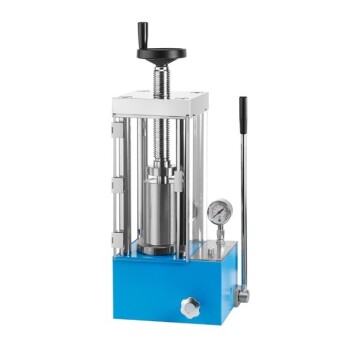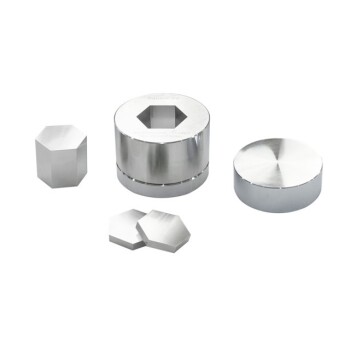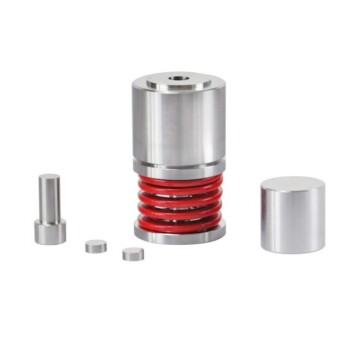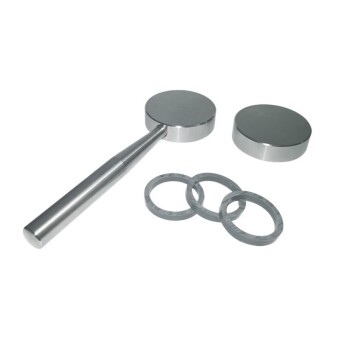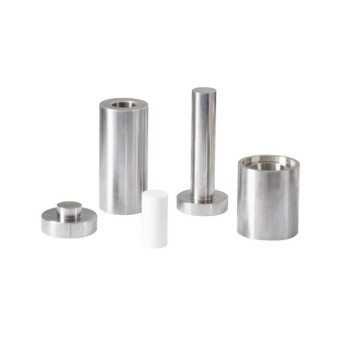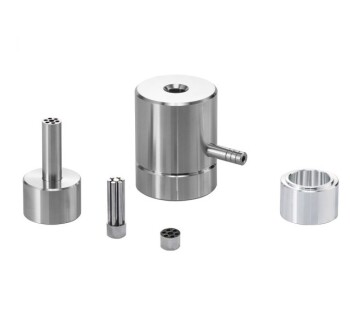In materials science, isostatic pressing is a cornerstone technique for creating high-performance components from powdered materials. It is most frequently used to produce advanced ceramics, complex metal alloy parts, robust composites, and critical items like nuclear fuel pellets, turbine blades, and medical implants where structural integrity is non-negotiable. This method excels at densifying powders to create a solid part with superior and uniform mechanical properties.
The core value of isostatic pressing lies in its ability to apply pressure equally from all directions. This unique, uniform pressure consolidates powdered materials into complex shapes with exceptionally consistent density, eliminating the internal weak points that plague components made with traditional one-directional pressing.
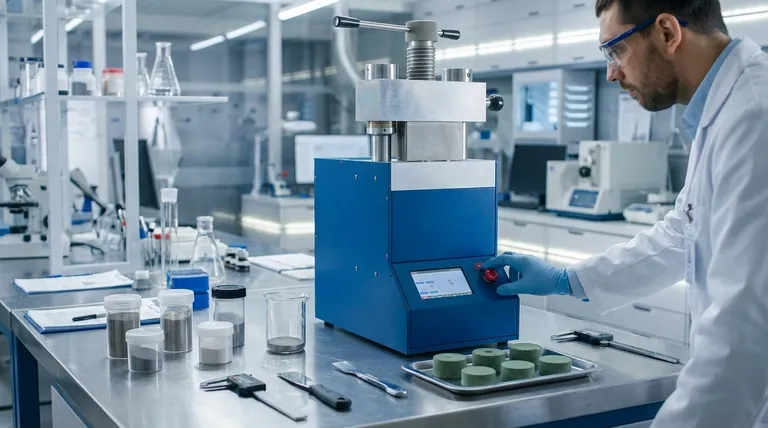
The Fundamental Principle: Uniform Pressure
Isostatic pressing is fundamentally different from conventional uniaxial pressing, where pressure is applied from only one or two directions. Understanding this distinction is key to grasping its applications.
How It Works
A powdered material is first sealed in a flexible, airtight mold. This entire assembly is then submerged in a fluid (either a liquid for Cold Isostatic Pressing or a gas for Hot Isostatic Pressing) inside a high-pressure vessel. As the fluid is pressurized, it exerts equal force on every surface of the mold, compacting the powder uniformly.
The Key Result: Uniform Density
This all-sided pressure is the technique's defining advantage. It eliminates the density gradients, internal stresses, and potential shear cracks that can form in a part made with uniaxial pressing. The result is a "green" part (pre-sintering) with remarkably consistent density throughout its entire volume, regardless of its geometric complexity.
Why This Matters for Performance
Uniform density directly translates to superior and more predictable mechanical properties. Components free from internal density variations are stronger, more reliable, and exhibit significantly better fatigue resistance. For high-performance applications in aerospace or energy, this predictability is not a luxury—it is a mission-critical requirement.
Core Applications in High-Stakes Industries
The unique benefits of isostatic pressing make it the go-to method for manufacturing parts that simply cannot fail. Its applications are concentrated in industries where performance and reliability justify the process.
Aerospace and Defense
This sector relies on isostatic pressing to create parts with complex shapes and high strength-to-weight ratios. Key applications include turbine blades, engine components, and rocket nozzles. The process allows for the creation of near-net-shape parts from high-performance alloys, minimizing the need for costly and difficult machining.
Energy and Nuclear
In the nuclear industry, fuel pellets must have perfectly uniform density to ensure predictable thermal conductivity and fission behavior. Isostatic pressing is the standard for achieving this. The technique is also used to produce other critical ceramic components like crucibles for molten materials and electrical insulators for high-voltage equipment.
Advanced Ceramics and Composites
Isostatic pressing is ideal for forming brittle or hard-to-compact ceramic powders. It is used to manufacture everything from spark plug insulators and automotive oxygen sensors to durable grinding wheels. It is also expanding into new areas, such as forming sputtering targets for the semiconductor industry and creating wear-resistant coatings for engine parts.
Understanding the Trade-offs and Limitations
While powerful, isostatic pressing is not a universal solution. An objective assessment requires understanding its operational trade-offs.
Cycle Time and Throughput
Isostatic pressing is typically a batch process. The time required to load the vessel, pressurize, depressurize, and unload is significant. For high-volume production of simple shapes, it is considerably slower and less economical than continuous methods like uniaxial pressing or extrusion.
Equipment and Tooling Costs
The high-pressure containment vessels represent a major capital investment. Furthermore, the flexible molds used to hold the powder have a finite lifespan and must be replaced, contributing to the operational cost per part.
Dimensional Precision
The process creates a "near-net shape," not a final, perfectly toleranced part. The compacted green part has high strength but will shrink predictably during the final sintering (firing) stage. While this shrinkage is uniform, some final machining is often required to meet very tight dimensional specifications.
When to Choose Isostatic Pressing
The decision to use this technique should be driven by the specific requirements of your component.
- If your primary focus is component reliability and performance: Isostatic pressing is the superior choice for any critical part where internal defects or density variations could lead to failure.
- If your primary focus is creating complex geometry in brittle materials: This method excels at forming intricate shapes from ceramic or metallic powders that are otherwise impossible to cast or machine effectively.
- If your primary focus is mass production of simple shapes: Isostatic pressing is likely overkill; other methods like uniaxial pressing are almost always faster and more cost-effective.
- If your primary focus is minimizing waste of expensive materials: Because it produces a near-net shape, this technique offers extremely high material utilization, making it a cost-effective choice for parts made from precious or strategic materials.
Ultimately, isostatic pressing is the definitive solution when a component's internal structural uniformity is the most critical factor for its success.
Summary Table:
| Application Area | Key Components | Benefits |
|---|---|---|
| Aerospace and Defense | Turbine blades, engine components, rocket nozzles | High strength-to-weight ratio, complex shapes, reduced machining |
| Energy and Nuclear | Nuclear fuel pellets, crucibles, electrical insulators | Uniform density, predictable performance, reliability |
| Advanced Ceramics and Composites | Spark plug insulators, grinding wheels, sputtering targets | Consistent density, improved mechanical properties, wear resistance |
Enhance your laboratory's capabilities with KINTEK's advanced lab press machines, including automatic lab presses, isostatic presses, and heated lab presses. Our solutions deliver uniform density and superior performance for critical components in aerospace, energy, and ceramics, ensuring reliability and efficiency. Contact us today to discuss how we can support your specific needs and drive innovation in your projects!
Visual Guide
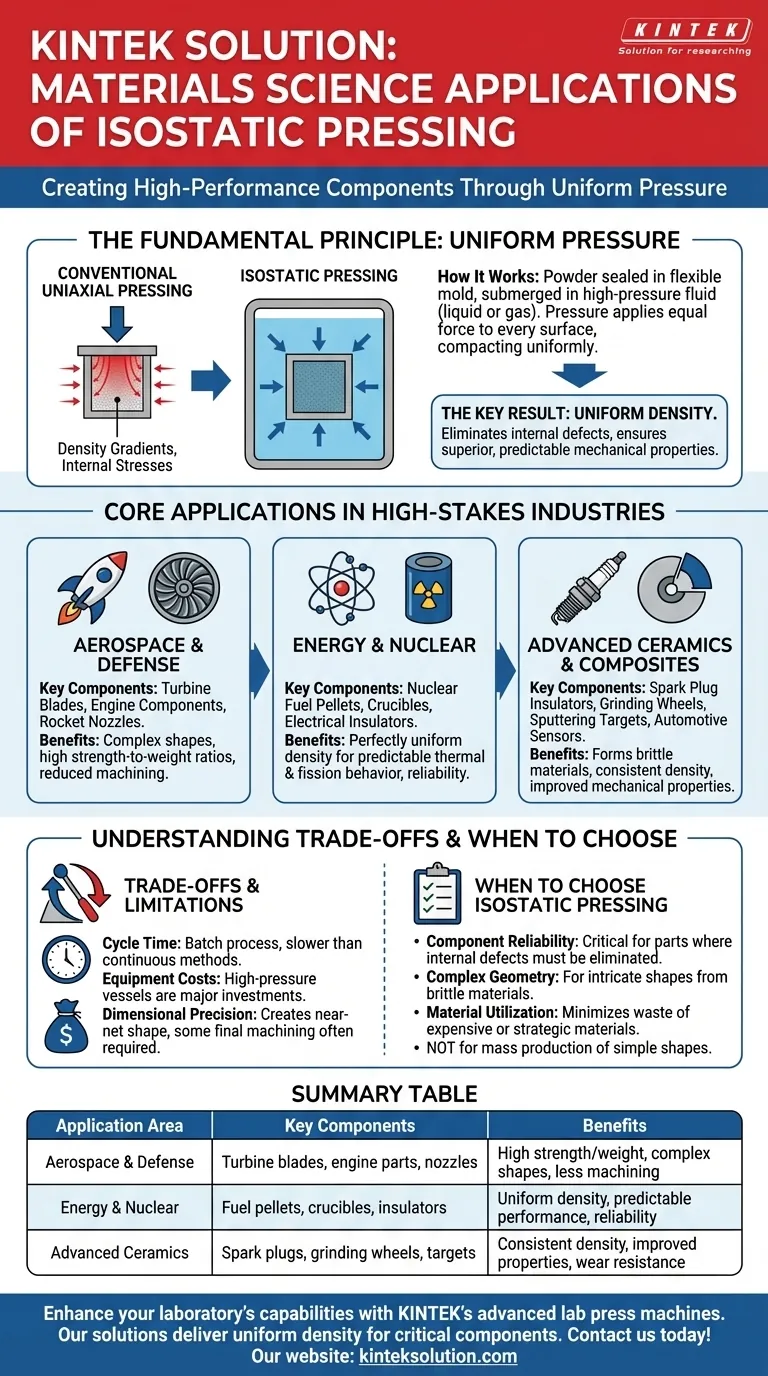
Related Products
- Automatic Lab Cold Isostatic Pressing CIP Machine
- Electric Lab Cold Isostatic Press CIP Machine
- Electric Split Lab Cold Isostatic Pressing CIP Machine
- Manual Cold Isostatic Pressing CIP Machine Pellet Press
- Lab Polygon Press Mold
People Also Ask
- How does cold isostatic pressing improve production efficiency? Boost Output with Automation and Uniform Parts
- How does CIP compare to cold compaction in metal dies? Unlock Superior Performance in Metal Compaction
- How does cold isostatic pressing facilitate the manufacture of complex shaped parts? Achieve Uniform Density and Precision
- What is the advantage of cold isostatic pressing in terms of controllability? Achieve Precise Material Properties with Uniform Pressure
- What are the common forming processes in advanced ceramics? Optimize Your Manufacturing for Better Results
